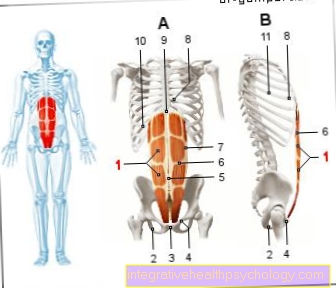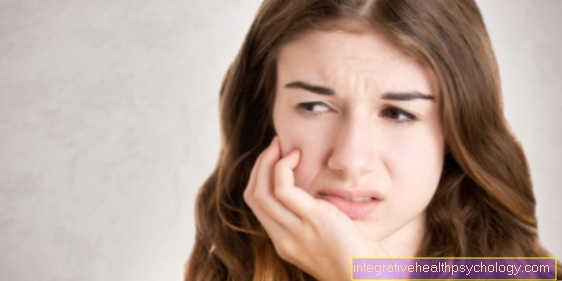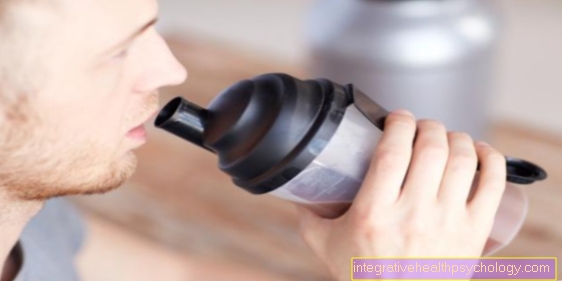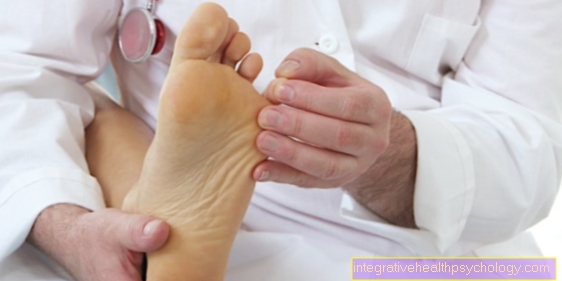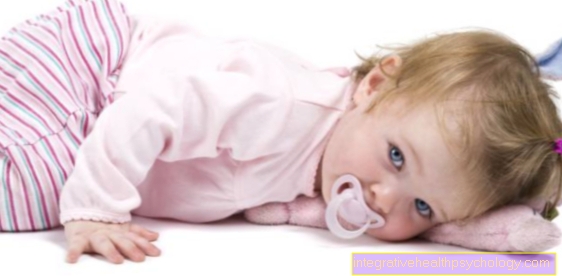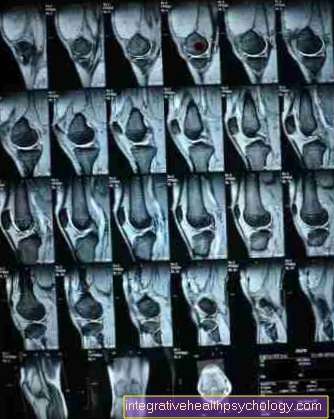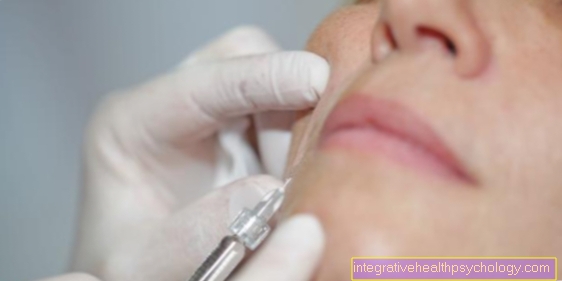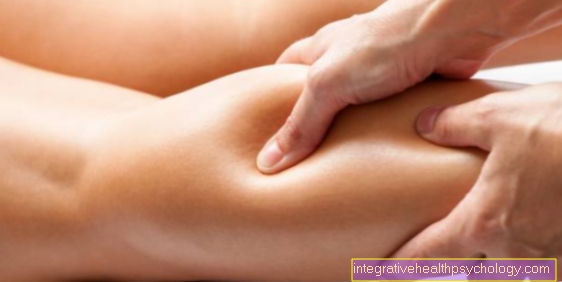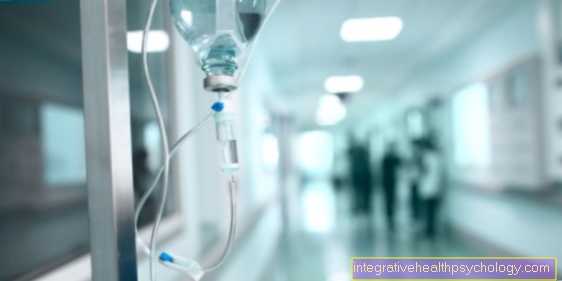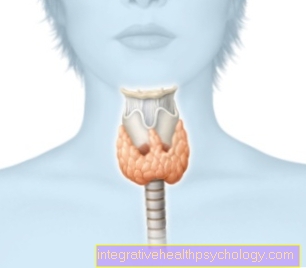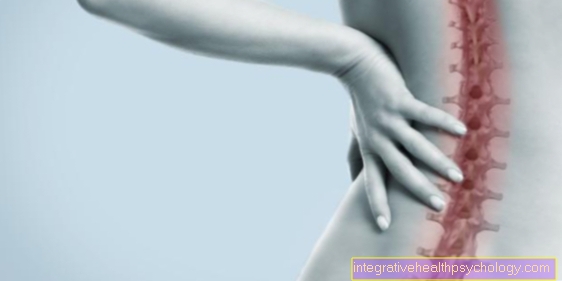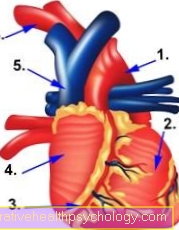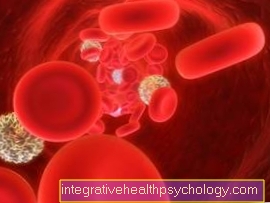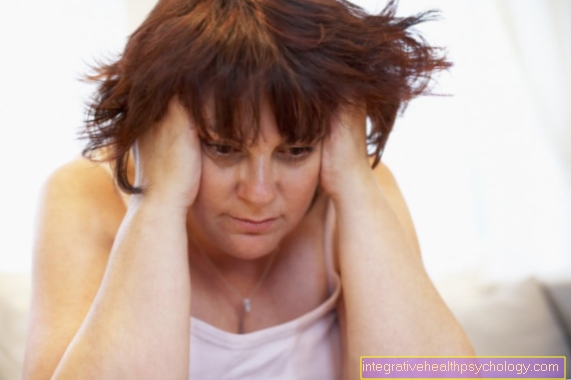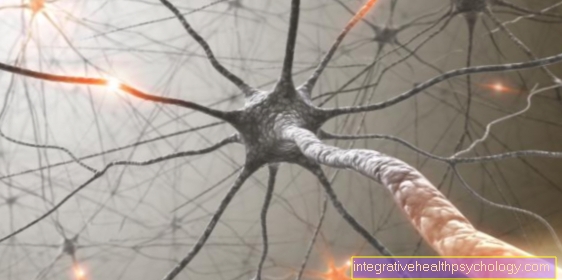Sleep disorder
Synonyms
Lunatism, noctambulism, insomnia, insomnia, moonstalking, difficulty falling asleep, sleeping disorders, premature awakening, excessive sleep (hypersomnia), disturbances of the sleep-wake rhythm, insomnia (asomnia), sleepwalking (moon addiction, somnambulism), nightmares
Please also see our topic too neurological sleep disorders
definition
A sleep disorder, also known as insomnia in technical terms, is defined as being unable to fall asleep, waking up frequently at night, waking up very early in the morning and / or poor sleep quality.
Epidemiology
Almost every 6th adult suffers from a massive sleep disorder, this corresponds to about 15%. Another 13-15% suffer from occasional and mild insomnia. Older people are more often affected than younger people. In the over 60-year-olds, around every fourth person regularly suffers from insomnia / sleep disorders.
Classification
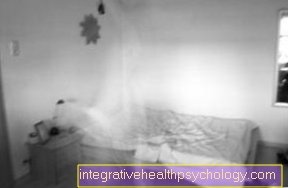
Not all sleep disorders are the same. Sleep disorders are typically divided into two categories.
- Sleep disorders triggered by internal processes - intrinsic insomnia
- Sleep disorders caused by external stimuli - extrinsic insomnia
In intrinsic insomnia, the 5 most common disorders are divided:
- The so-called sleep apnea syndrome: In sleep apnea syndrome, various mechanisms (e.g. obesity) lead to prolonged respiratory pauses or respiratory arrests. Since these interruptions can last between 10 and 60 seconds, the patient gets into what is known as an “oxygen debt”. This means that the body goes into a state of alarm and takes emergency measures as it threatens to suffocate. For the patient, this means that he or she wakes up or almost wakes up very often.
Inset: Relatives, mostly wives, know this emergency "fast watch". Mostly it is indicated by a bloodcurdling snorer, with which the patient gasps for air.
Since dozens of these dropouts can occur each night, the patient's sleep is almost constantly interrupted. The direct consequence is that he feels “worn out” the following morning, as he can usually no longer achieve a deep, relaxing state of sleep. About 1-2% of adult men are more or less affected by this problem. - Narcolepsy: The so-called narcolepsy leads to extreme sleepiness during the day and disturbances of night sleep. Typical symptoms that can occur in the context of narcolepsy:
- Sudden "sleep attacks" that the patient cannot defend themselves against
- Sudden loss of muscle tension and the associated "collapse" of the body without loss of consciousness (technical term: cataplexy).
- Hallucinations while falling asleep (hypnagogic hallucinations). Both acoustic and optical phenomena can occur here.
- Feelings of paralysis at night
- Restless legs syndrome (RLS):
With this disorder, the patient typically feels tingling discomfort in their legs. These are usually accompanied by a compulsion to move the legs. When moving, there is often a feeling of relief. The syndrome typically occurs shortly before falling asleep, but it does happen that the urge to move around and twitching while falling asleep also occurs at night.
"Restless Legs" (RLS) is an English expression which literally means: "Restless legs". - Psychophysiological factors: These factors summarize sleep disorders in which the “psychological attitude” to sleep is disturbed or the psyche hinders sleep. Stress and fear thus lead to sleep disorders just like the "abuse" of the bed as a place where you always think about your everyday problems or which you use for many activities during the day (telephoning, watching TV, eating, studying). The fixed expectation of another bad sleep will also cause a sleep disorder.
- Misperception of their own sleep: About 5% of the patients who seek treatment for sleep disorders have no objectifiable findings. I.e. there is a so-called misperception of the quality of sleep. People firmly believe that they did not sleep but were light asleep.
The most common disorders in extrinsic insomnia are:
- Sleep pills and alcohol abuse: Both sleep pills and alcohol initially promote sleep or stimulate sleep. But just as long-term use of headache relievers causes headaches itself, aids such as sleeping pills and alcohol have the opposite effect on sleep if they are used continuously. The reasons for these effects are typically habituation (ie you need more and more substance to achieve the same effect), withdrawal (ie you need at least a certain amount of substance to become calm at all) or a mixture of both.
The typical "culprits" are usually the so-called benzodiazepines: diazepam, oxazepam, flunitrazepam, lorazepam etc. - Changes in the day-night rhythm: Everyone has a so-called "internal clock" (technical term: circadian rhythm). If you try to sleep against this clock, you will have significant difficulty falling asleep in most cases. This disorder is often found in people who are or have to be active at night (nursing, frequent disco goers, etc.)
- Ingestion of stimulants: Most drugs that stimulate in any way significantly reduce the need for sleep. Disturbances in falling asleep and frequent nocturnal awakenings are typical.
Sometimes simple breathing difficulties are the cause of a sleep disorder. Causes can e.g. be:
- Curvature of the septum
- snoring
- Polyps
- sniff
causes
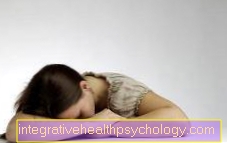
There are many causes that can ultimately lead to a sleep disorder. The following are the most important ones.
- Physical causes
Pain or other irritation in or on the body can lead to an extremely disturbed night's sleep. Typical physical illnesses are e.g. chronic back pain, inflammatory joint diseases, "heartburn“, Fibromyalgia or that too "Restless leg syndrome“
- Bad sleeping and environmental conditions
Typical environmental conditions that disrupt a comfortable sleep are e.g. Noise of any kind, temperatures that are too high or too low, too bright or even a restless bed partner
- Substance intake
Typical "sleep killers" are here Coffee, cola or other beverages containing caffeine, alcohol, Amphetamines, Sleeping pill abuse and cocaine
- Disorders of the day-night rhythm
Lots of that already in one 3-layer system have worked know that sleep can also be a matter of luck here. The so-called Jet lag causes insomnia (insomnia / sleep disorder).
Sleep disorder due to jet lag
A Jet lag can cause insomnia after a long flight by plane. These can be as Fall asleep- as well as Difficulty sleeping through the night express. At the same time, sleep disorders often occur during the day fatigue on. Every person's body is subject to its own time-of-day rhythm, the so-called circadian rhythm. This controls both sleeping behavior and eating behavior. The time change messes up this rhythm, but after a few days the body gets used to the new time.
Read detailed information on the subject: Jet lag
therapy
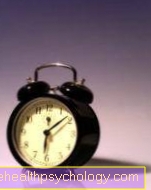
Therapy sleep disorder A first therapeutic approach must be to improve what is known as "sleep hygiene". This means that the patient has to analyze whether he is observing the following rules regarding his sleep:
- "I only go to bed when I'm tired."
- "I only use my bed to sleep and nothing else."
- "If I can't sleep, I get up again and occupy myself outside of bed and lie down again when I want to."
- "I keep getting up when I fail to sleep."
- “I always get up at the same time. It doesn't matter how many hours I slept in the night. The same goes for going to bed.
- "I never sleep during the day!"
The aim of implementing and observing these rules is that the bed becomes a stimulus that has only one purpose - to sleep. Often enough, the bed is a symbol of sleepless nights and frustration.
Adhering to the getting up times is a good way to train the body to a rhythm. Sleeping in or napping during the day is relaxing for the moment, but is also a guarantee for another bad night.
You can find detailed information on this topic at
- Sleep hygiene
- sleep better
Relaxation procedure
Progressive muscle relaxation according to Jacobson has proven to be particularly suitable here. More information on this topic can be found at: progressive muscle relaxation
In addition to progressive muscle relaxation, the following procedures can be helpful:
- Autogenic training
- hypnosis
- meditation
- yoga
Read more on the topic: Breathing exercises to help you fall asleep
Psychotherapeutic interventions
Various behavioral therapy techniques (in combination with the above options) have also proven helpful.
Paradoxical intervention: the patient lies down in his bed and “forbids” to fall asleep, so to speak. (Of course, he only does this in his mind.)
Thought stop: With this technique the patient learns e.g. a neutral word that helps him "stop" unpleasant thoughts
Cognitive restructuring: Often times, patients with insomnia are kept awake by irrational thoughts.
"If I don't fall asleep right now, I won't be able to take the exam tomorrow anyway"
"Everyone needs at least 8 hours of sleep."
This works well therapeutically, so that ultimately the tormenting aspect of such thoughts disappears.
Medication
It must be mentioned here that there are of course a large number of situations and disorders in which drug treatment of the sleep disorder is correct and necessary.
In most cases, insomnia can be treated well with light herbal medications. The focus here is on therapy with valerian and black cohosh. Both the valerian and the black cohosh have a calming effect and thus stimulate the skin.
While the effects of valerian set in immediately, black cohosh only works after long, regular use. Therefore, black cohosh is not suitable for acute sleep disorders.If these herbal remedies do not show any effect and the sleep disorders persist, there are of course various sleeping pills. However, these should or must be prescribed by a doctor.
Read more on this topic: Sleeping pills.
The bed
The bed also plays a decisive role in sleep disorders.
Information about beds can also be found at: Solid wood beds


